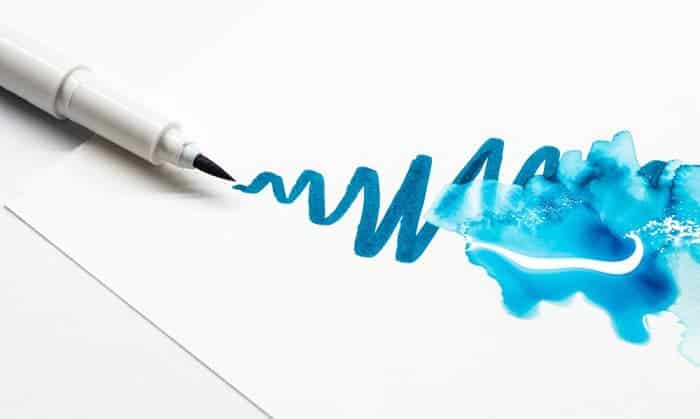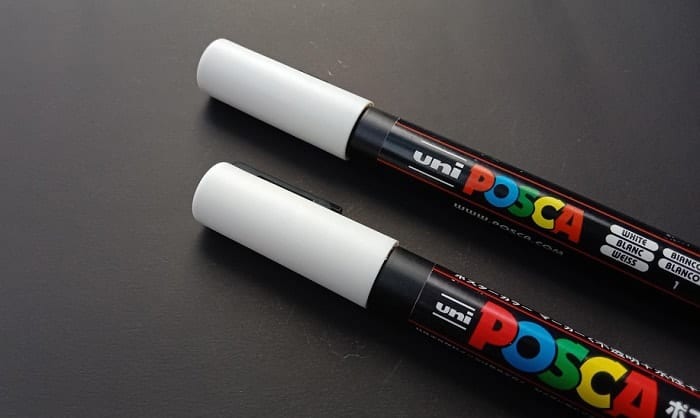
Markers and pens have been an efficient tool for decades as people can express themselves and their thoughts in many creative ways. Furthermore, there is a variety of choices regarding the colors, sizes, and types of markers.
There are two main subcategories when discussing the solvents of markers: alcohol-based and water-based markers. Each of them has its pros and cons, so choosing between alcohol-based markers and water-based markers might be quite difficult.
So, water-based vs alcohol-based markers – what are the differences? In particular, what are water based markers?
Don’t worry, we are here to give you all the answers! In this article, I’m going to walk you through some explanations as follows:
- What Water-based Markers are: The solvent of these markers’ ink is primarily water.
- The differences between water-based and alcohol-based markers: How to differentiate these two types of markers based on various aspects such as ink, line of drawing, scanning, etc.
- Some recommendations to use water-based markers better: What type of paper fits the best when using water-based markers, trustworthy brands.
Are you excited to learn about water-based markers? Let’s get started with the first part – the definition of water-based markers!
Table of Contents
What Water-Based Markers are

In general, both water-based and alcohol-based markers comprise similar components. However, what distinguishes these two types of markers lies in the solutions used in the production of the marker ink.
Regarding an alcohol-based marker, alcohol is added as the solvent of the marker ink. Yet, for a water-based marker, water is the main ingredient in the creation of the solution. Water and glycerin are combined to create solvents.
Thanks to the fact that water is the main ingredient in formulating the solution, water-based markers are much easier to wipe off any surface than alcohol-based ones.
Water-based marker ink is likely to be extremely absorbent, instead of overlaying, to the surface. Consequently, paper can easily be ripped off or torn down if you apply too much water-based ink in one area.
In addition, water-based marker ink is hard to blend with other markers as they tend to soak the paper. The reason for this is if you blend too many markers, the paper can be torn down. This type of ink also fades out in a short time.
However, the alcohol-based ink can still rip off the paper if you apply too much ink to the surface, or when you use some regular copy paper. So, no matter which kind of markers you use, be careful to apply a sufficient amount of ink to the paper.
More so, water-based markers tend to create illustrations that are smooth and flexible, sometimes dreamy drawings. The colors are not as vibrant and diverse as the alcohol-based ink.
Last but not least, these markers are suitable for students and young children because they are non-toxic and easy to get rid of.
The Differences Between Water-Based and Alcohol-Based Markers

Based on their names, we can clearly find out the main difference between the water-based markers and alcohol-based markers: the first ones use water in the solution, while the latter use alcohol to produce the solution for marker ink.
Another difference between water-based and alcohol-based ink lies in how they create lines in drawing on paper. For the water-based markers, the ink tends to smear and create streaks in comparison to the alcohol-based markers.
This can be explained by the fact that the alcohol-based marker consists of dye ink and alcohol. As a result, when the alcohol-based ink contacts the paper, the alcohol immediately evaporates and doesn’t cause any reactions to the paper.
On the other hand, water evaporates much slower, so you may see some smearing after applying water-based markers.
Moreover, there are differences in how you blend the colors when using two types of markers. The water-based marker ink is a lot similar to watercolors. If you want to create artworks using water-based markers, just add water to blend the colors or wash off the ink.
With the alcohol-based marker, you can create astonishing artworks by layering the colors without worrying about tearing the paper. Nonetheless, the ink usually lasts long on the surface, so it’s hard for you to fix your mistakes.
The various effects the ink brings to the artists also differentiate water-based and alcohol-based markers. The range of colors markers can offer is a vital aspect.
The ink in a water-based marker is usually less heavy than that in an alcohol-based marker. As a result, when using the alcohol-based ink on the regular paper, you may use only one side since the alcohol-based ink is more likely to bleed through the paper.
Additionally, alcohol-based marker ink is usually permanent, which may consist of different toxic chemicals, which makes it unsafe for children. Nevertheless, the water-based marker ink contains nontoxic ingredients, so it’s safer for humans.
If you are a student or have to work with documents regularly, scanning is always an important task. You may be curious to know which kind of marker may produce better scanning outcomes. The answer is alcohol-based markers. Because the ink can be applied evenly on the surface, the products using alcohol-based markers can be scanned better.
With water-based markers, pictures cannot be scanned easily since they create smearing on paper. Consequently, it creates hardships for digital devices to scan the works. Also, a variety of colors is offered when choosing alcohol-based markers, while the options for water-based markers might not be as many.
Talking about the long run, alcohol-based markers have an advantage over water-based markers as some of them are refillable. On the other hand, alcohol-based markers are much more expensive compared to their counterparts.
Although alcohol-based markers are dominating the world, people still enjoy using water-based ones, most of whom are students and new artists. Therefore, let’s find out how to utilize the water-based markers in the following sections!
Recommendations to Use Water-Based Markers Better
Water-based markers are the most popular among students and many people who do calligraphy. Hence, to use water-based markers better, I have some small tips for you.
Firstly, water-based markers work best on regular pieces of paper, or on notebooks and bullet journals. These types of paper are not as thick as plastic cards.
Secondly, water is important when you use these markers because they allow you to adjust the colors more easily. Just simply add water onto the ink previously added on the surface until it creates the desired effects.
Here is a water-based marker brand that I would like to recommend to you because of its outstanding quality – The Dual Brush Pen by Tombow. This is the best choice since it has two super durable tips because they are made of nylon fiber. In addition, this material makes your drawing or writing extremely smooth.
Lastly, there are numerous colors that the brand offers to their customers. However, if you’re a beginner, my advice is to stick to the 10 pack set, which includes 9 different colors and a water brush pen to blend in.
Conclusion
After reading this article, some may say I have created a battle of alcohol-based markers vs water-based markers. I’m not trying to throw shade to any of those two, because each of the two markers has their own pros and cons.
After reading this article, I hope that you’ll clearly understand what water-based markers are, and can figure out what kinds of markers suit your taste best.
Did you find this article on what are water based markers informative? Let me know in the comment section! Share it with your family and friends to spread joy.

I am a former art teacher, so it is evident to me the importance of art in educating the new generation. We also want to help parents who plan to teach their children and desire the best tools and tips for them.